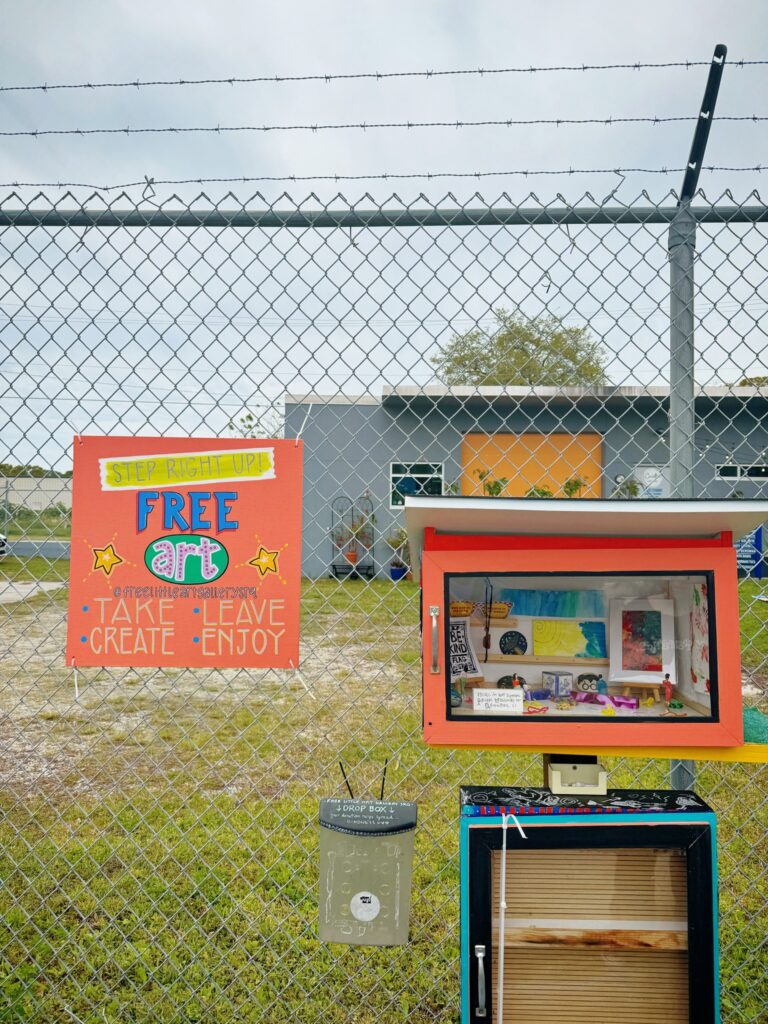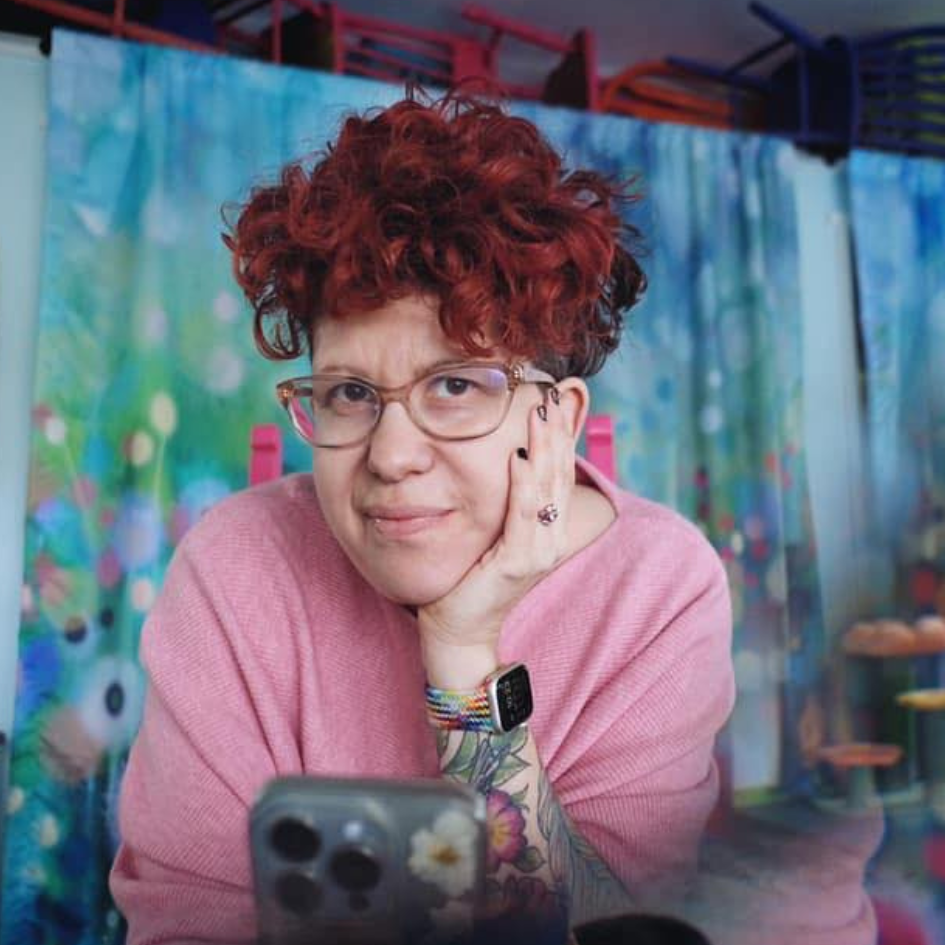
When I work with creative women, the concepts of art and creativity are often intertwined. There’s this assumption that in order to own the idea of “being creative” that you need to also be good at art. This common misconception is so far from the truth! I have never perceived myself as an artist. However creativity is a core part of my being human.
I’m on a mission to help women understand that while the two are related, they are not the same. You don’t need to be an artist to be creative, and anyone can tap into their creative potential. This is why I’ve been so inspired by the concept of the “Free Little Art Gallery” and why I’ve set out to begin one in our local community.
If you’re new to the concept of the “Free Little Art Gallery” or FLAG, it is a small, publicly accessible space where community members can display and exchange miniature artworks. Similar to the concept of Free Little Libraries, these galleries encourage people to take a piece of art and leave a piece of art, fostering a sense of community and creativity.

They are designed to make art accessible to everyone, encouraging participation and engagement from all, regardless of artistic background or skill level. The installation of this gallery isn’t just for artists; it’s designed to inspire creativity, spread joy, and enhance well-being throughout our neighborhood and beyond.
With that in mind, let’s explore the key differences between art and creativity, and discover how each of us can tap into our creative potential.
Definition and Scope
- Art is often seen as the product of creativity. It is the tangible expression of ideas, emotions, and concepts through various mediums like painting, sculpture, music, dance, and literature. Art is typically judged by aesthetic value and technical skill.
- Creativity, on the other hand, is the ability to generate new ideas, solutions, and approaches. It is a cognitive process that involves imagination, originality, and inventiveness. Creativity is not confined to artistic endeavors; it can manifest in everyday problem-solving, innovation, and thinking outside the box.
Skill vs. Process
- Art often requires a certain level of skill and practice. Artists hone their techniques over time to perfect their craft, whether it’s mastering brush strokes, learning musical scales, or developing a unique writing style.
- Creativity is more about the process than the outcome. It doesn’t require mastery of a specific skill set but rather a willingness to explore, experiment, and think divergently. Creativity is about making connections between seemingly unrelated things and finding new ways to approach tasks and challenges.
Output vs. Thought
- Art results in a physical or auditory output that can be shared, viewed, and experienced by others. It is often intended for public consumption, to evoke emotions, provoke thoughts, or convey messages.
- Creativity doesn’t always result in a visible or tangible product. It can be a fleeting thought, a moment of insight, or an innovative idea that might not be immediately realized. Creativity can enhance various aspects of life and work without necessarily producing “art.”
Subjectivity vs. Universality
- Art is highly subjective. What one person considers a masterpiece, another might not appreciate. Artistic value is often debated and can vary greatly across cultures and personal tastes.
- Creativity is universal. Everyone has the potential to be creative in their own way. It’s not limited by cultural, social, or personal preferences. Creativity can be nurtured and expressed in countless ways, from developing new recipes to devising efficient workflows or coming up with fun activities for kids.
Expression vs. Innovation
- Art is a form of self-expression. Artists convey their feelings, thoughts, and perspectives through their work, aiming to connect with and move their audience.
- Creativity is often about innovation and problem-solving. It’s about finding novel solutions to challenges, improving processes, and coming up with new ideas that can benefit various aspects of life, from business to everyday living.
End Goal vs. Continuous Journey
- Art often has an end goal – the completion of a piece that can be displayed, performed, or published. There’s a sense of accomplishment and finality in creating art.
- Creativity is a continuous journey. It’s not about reaching a final destination but about constantly exploring new possibilities and ways of thinking. Creativity thrives on curiosity and the perpetual desire to discover and invent.
While art is the beautiful and impactful manifestation of creativity, you don’t need to be an artist to be creative. Creativity is a mindset, an approach to life that anyone can develop and embrace. And, Spark ! Studio events are the perfect place for you to create in community and celebrate the messiness and imperfection of creative expression.

Whether you’re solving a problem at work, coming up with a new recipe, or finding a fun way to entertain your family, remember that you’re engaging in the wonderful, limitless world of creativity. And if the outcome makes you smile, you may be more of an artist that you realize!

Hi, I’m Beryl of Be Young Creative! I was never a person who carried a camera with me wherever I went. But I fell in love with photography in 2009 as a way to document the exciting time of becoming a mom and rediscover my creative spark along the way. I believe that when you choose the creative path, you discover it’s never too late to change course, find happiness, heal, try more, do less, be bold, get quiet, & cultivate a life of courage and connection. I created the Cultivate Creativity Journal as a way to make space for you in the chaos of daily life and explore what it means to create a life you love.
